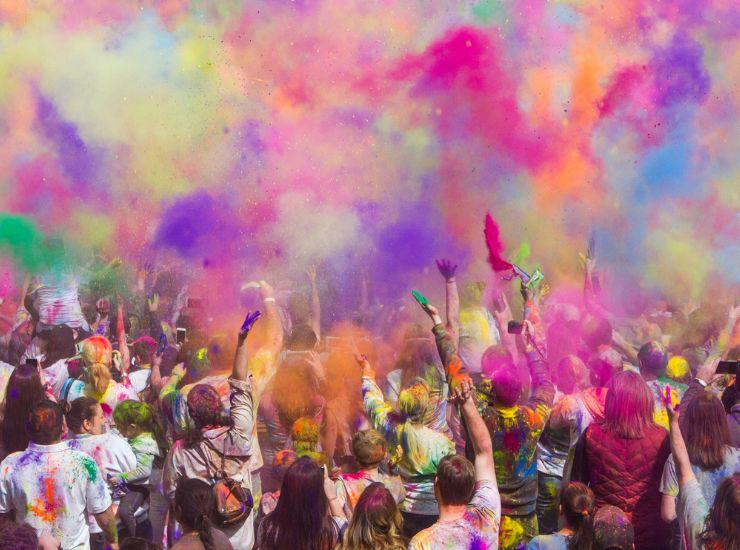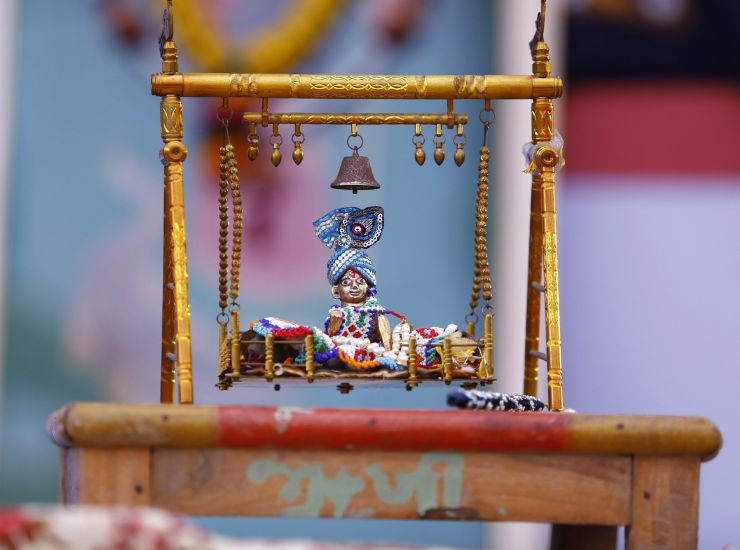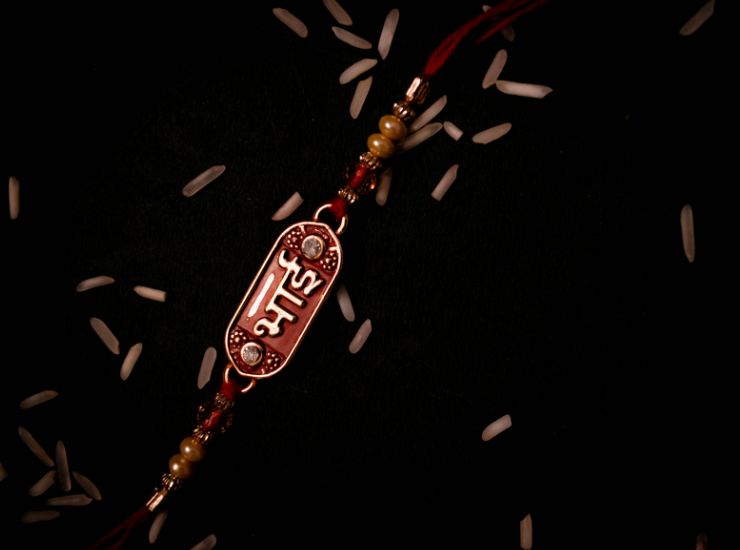Fairs and Festivals of India
Fairs and Festivals of India
India, a land of diverse culture and tradition is renowned for myriad of fairs and festivals, which are celebrated throughout the year in different region of the country. India's fairs and festivals reflect the vibrant culture of the country and these special events significantly play a vital role in the growth of the Indian tourism industry. Many tourists visit India just to enjoy some special fairs and festivals of India reflecting the true spirit of the people. Festivals and fairs are so deeply rooted in the culture of India that these have become an integral part of people's life. Showcasing the rich Indian culture and tradition, these fairs and festivals are celebrated with great pomp and show. To explore the true color of India it is extremely important to know about certain fairs and festivals in detail.
Dussehra
India is rightly considered as land of festivals, where every festival holds special significance in some or the other way. Dussehra is one such festival, which epitomizes people religious, cultural and social aspirations. Dussehra or Navratri is celebrated during the first nine days of the Ashwin month according to the calendar of Hindus. Goddess Durga and her nine forms are worshiped in this festival, where each day is considered as auspicious and pure. The festival of Dussehra is mostly celebrated in Gujarat, West-Bengal, and in some part of Rajasthan. In Gujarat, colorful Garbha dances are the major attractions during Dussehra festival. In east people celebrate Dussehra with great vigor and enthusiasm.

Deepavali
Diwali is a great festival of light and is celebrated throughout India with same level of fun and excitement. Joy and festivity can be experienced at ever corner of India on the day of Diwali as it is celebrated in every state and region. Diwali is celebrated on no moon day or amavasya, which comes fortnight in the month of kartik. It is believed by the Hindus that Lord Rama retuned to Ayodhya after achieving victor over Ravana. People welcomed him along with his wife and brother with lighted diyas, so till today this day is celebrated in the same manner. On the auspicious occasion o Diwali people light up diyas and candles in and around their house and perform Laxmi Puja in the evening to seek the divine blessing of the goddess.
Holi
This is the most popular festival of India, celebrated during the season of spring. Holi symbolizes the liveliness and exuberance of the young heart, as this festival is mostly loved and enjoyed by the young generation of India. Holy is celebrated by spraying different colors and dancing on the rhythm of the Holi songs. This festival is associated with various myths and the most prevailing one is the tale of Holika. According to the Hindu mythology, there was a king named Hiranyakashipu, who considered himself mightier than God and ordered people to worship him. But his little son Prahlad refused and so he asked his sister Holika to burn him in the fire as she had a boon to remain unharmed by fire. Holika sat in the fire with little Prahlad on her lap but instead of burning Prahlad, Holika only burnt to ashes. Today also bonfires are lit on the night before Holi to celebrate the victory over evil.

Maha Shivaratri
Throughout India Mahashivaratri is celebrated with much zeal and enthusiasm. This festival holds a special place in the life of unmarried girls as they observe a complete day fast and worship Lord Shiva in order to be blessed with good husband. Devotees carry holy Ganga water and walk bare-footed to temples to offer holy water on the statue of Lord Shiva. There are numerous rituals and tradition carried out by the devotees on this day. The devotees take a dip in the river and then go to the temples to offer prayers. The day of Mahashivaratri is also considered as the auspicious day for the devotees to visit any of the twelve Jyotirlinga situated in different parts of the country.
Janmashtami
Janmashtami or the birthday of Lord Krishna is an important festival of the Hindus. Throughout India this festival is celebrated with great devotion and attachment, but the cities that celebrate this festival in the special manner are Vrindhavan, Mathura, and Dwaraka. Janmashtami of these cities are special as these places are considered as the living place of Lord Krishna. Dahi Handi is a popular ceremony that is organized on the Janmashtami day. In this ceremony a pot containing curd or butter milk is hanged on certain height, which has to be broken by youths.

Ganesh Chathurthi
Lord Ganesha, affectionately called Ganapati, is commonly depicted in homes and offices throughout India as a chubby, smiling and a little mischievous God. His devotees scribe to Ganesha the ability to bestow wisdom and wealth upon us humans, thus making him probably the most popular deity in the Hindu pantheon. To repay Ganesha’s bounty, in India, especially in Maharashtra and nearby areas, the entire population celebrates the ten-day festival of Lord Ganesha’s birthday. The festival of Ganesh Chaturthi is celebrated all over India with great festivities and zest. It is celebrated as the birth anniversary of Lord Ganesha, the God of wisdom and prosperity. The festival honors Ganesha, the elephant-headed God of the Hindu pantheon. During the ten days of Ganesh Chaturthi, the image of the God is worshipped and feted in most homes, temples and halls, and on the last day the images are taken in a procession and immersed in water. Fasting, feasting and distribution of sweets are important aspects of Ganesh Chaturthi rituals in India. Hindus pray to images of Lord Ganesha, large and small, many of them made specially for the occasion by cottage industries and street-side artisans. Even those that do not wish to keep the idols alive by daily prayers, offerings, and lighting oil lamps, immerse them in the nearest water body (rivers, lakes and the sea that are sacred to the Hindus). Ganesh Chaturthi falls on the fourth day of Bhadrapada (August/September) month of Indian calendar. The celebration of this festival is followed according to the Indian calendar and hence the month in the English calendar varies every year. The festival is celebrated for as many as ten days in areas like Maharashtra, Pune, and nearby areas.
Rakshabandhan
Rakshabandhan is an unspoken pledge exchanged between a brother and sister cementing their fraternal relationship. This also reinforces their protective bond against all ills and odds. Raksha Bandhan is celebrated on the day of Shravan Poornima that falls in the month of August every year. On this very day, the sisters tie a delicate, sometimes decorated, thread on the wrist of their brothers as a symbol of love and affection. This makes the brothers bound to protect their sisters from any trouble or wound. The chanting of a holy mantra by the sisters while tying the thread says, “I am tying a Raksha to you, similar to the one tied to Bali, the powerful king of the demons. Oh Raksha, be firm, do not waver”. The mantra recalls how the demon king Bali had become very powerful with the Rakhi on. The power of the mantra is supposed to protect the wearer from evil influences. This shows how dependent and secure a sister feels when she has a brother. Tying this Rakhi or Raksha signifies the re-strengthening of the bond between the siblings of opposite sexes. Raksha Bandhan is the most awaited festival of the year for every girl. It is celebrated in the month of August on the full-moon day known as the Shravan Poornima in India. The celebration of this festival is followed according to the Indian calendar, and hence the month in the English calendar varies every year.

Baisakhi
Several Indian festivals coincide with the harvest time and Baisakhi is one of them. Baisakhi is celebrated by the people of Punjab with vigor and joy. It is celebrated by different names and with different rituals almost all over India, when the Rabi crop is ready for harvesting. Baisakhi is also the day when the tenth Guru of the Sikhs, Guru Gobind Singh, founded the Khalsa Panth over three hundred years ago. The Vaishakha period of April and May is filled with festivals of fun, frolic and merry-making and Baisakhi, derived from the word Vaishakh, falls in this auspicious period. Based on the Indian solar calendar, this festival falls on April 13 every year and on April 14 once every 36 years. Other festivals celebrating the harvest are Bihu in Assam, Pongal in South India.
Pushkar Fair
Held every year in the month of November, Pushkar fair is the ideal occasion to witness the charisma of Rajasthan in full bloom. Every ingredient that makes Rajasthan a distinct place can be spotted in the fair including men dressed in colorful traditional clothes, women in mirrored skirts and vivid shawls, embroidered clothes, exquisitely designed jewelry, pots and ornaments. This four-day long fair full of fun and frolic falls on the full moon of Kartik Purnima and offers an unique opportunity for a shopping spree while giving an edge to the consumer product marketing in rural Rajasthan. Improved accommodation facilities have made it an International event A large camel fair in which traders from all over Rajasthan participate to parade, race and trade their camels, horses and cattle give it a fascinating touch. The acrobats, jugglers, snake charmers and fire-eaters will leave you mesmerized with their skilled performances. Cruise on a camel safari and get the real flavor of the fair.
Desert Festival
The otherwise sleepy town of Jaisalmer reverberates with enthusiasm and zeal during the Desert Festival that provides it with an occasion to parade its exuberant charm to the world. This colorful spectacle of dance and music showcases the rhythmic dances like Ghoomar, Gangaur, Gair, Dhap, Moria, Chari and Terahtal. The fire dancers are the special highlights of the festival. Held in the month of January-February the major attractions include turban-tying competition, Gair dancers and fire-dancers presenting enchanting displays of folk dance and music The various interesting contests including turban tying and Mr. Desert contest, the Camel races, acrobatics, dances and camel polo are sure to leave you spellbound. An awe-inspiring fusion of traditional dances backed by the folk music of the desert is sure to give you a time of your life. The major attraction of the festival remains the music and dance performance on the sand dunes.
Nagaur Fair
Nagaur awakes to the thronging of cattles, horses and camels during the time of cattle fair, which is reputed as one of the biggest in the country. The Nagaur bulls are renowned for their fleet-footedness and attract buyers from all over the world. Their owners with large moustaches and colorful costumes add a unique charm to the fair. Renowned for trading in cows, bullocks, camels and horses Held every year during the month of Magh (Jan-Feb) Provides an opportunity for a shopping spree to the locals The fair comes to an end with a series of exciting games including tug of war, camel races and strains of ballads that create a joyful atmosphere. Mirchi Bazaar (Red Chilly Market) is the main attraction and wooden items, iron crafts and leather accessories are also available in abundance during the fair.
Camel Fair, Bikaner
A unique blend of color, rhythm and melody. The Camel Festival begins with a colourful procession of bedecked camels, Ships-Of-The-Desert, in the red sandstone backdrop of the Junagarh Fort. The festivity advances to the open sandspreads of the Polo Grounds, followed by camel races, camel milking, fur cutting design, the best breed competition, camel acrobatics, camel bands and watching all this, are the gaping spectators. The camel display amazing foot-work, dancing gracefully to the slightest direction of their riders. Colourful bridles, bejewelled necks, jingling anklets and long, lanky camel shadows on dusky sands, cast a magic spell. The jubilant, skirt-swirling Gair dancers, the awe inspiring Fire dance, and dazzling fire-works light up the fortified desert city of Bikaner.
Gangaur Festival
The most important local festival in Rajasthan, Gangaur is held about a fortnight after Holi and the celebrations go on for eighteen days. The festival is held in honor of Gauri, a manifestation of goddess Parvati, the wife of Lord Shiva. The festival is celebrated by girls and married women throughout Rajasthan. Images of Gauri are ornamented and offerings are made. This is also an auspicious time for young people to select their life partners. Colorful processions with the town band, horses, and elaborate palanquins make it a fascinating spectacle. The Gangaur festival is celebrated throughout Rajasthan with great enthusiasm but the celebrations in Jaipur and Udaipur have their own special charm. The festival is also celebrated with great pomp and show in Bikaner, Jodhpur, Marathwara and Jaisalmer. Girls worship the goddess throughout the fortnight. Colorful images of Gauri, beautifully dressed and bejeweled, are taken out in a procession accompanied by the town band. A boat procession is taken out on the Pichola Lake in Udaipur. Women balancing several brass pitchers on their heads add to the gaiety of the Udaipur celebrations. Thousands of people from the countryside come to take part in the procession of Gangaur, which goes around from village to village. Tribal men and women get the opportunity to meet and interact freely and during this time, they select partners and elope to marry. An unusual, romantic custom sanctioned by the community, it helps many young people find their life partner.
Hemis Festival, Ladakh
The courtyard of Hemis- the biggest Buddhist monastery in Ladakh, is the stage of the famous Hemis Festival, that celebrates the birth anniversary of Guru Padmasambhava. Splendid masked dances are performed to the accompaniment of cymbals, drums and long horns. A colourful fair, displaying some beautiful handicrafts, is the special highlight of the festival.
This is a private individual tour and can be fully customized to suit your available days, travel preferences, and budget. Our experts are ready to help you create a bespoke tour just for you.
To get started, please contact us with the following details:
- Number of days for touring in India.
- Period of travel (Month of the year)
- Number of people travelling.
- Choice of destination in India (North, South, East, West)
- Choice of Hotels accommodation (Economy, Standard, First Class, Premium)
Send us an email on info@tour-india.net or submit the form with your queries, we will reply you with your tour within 24 hrs. *
Plan Your Journey Today
Ready to explore the wonders of India? Contact us to customize your tour package and embark on a journey of a lifetime.
